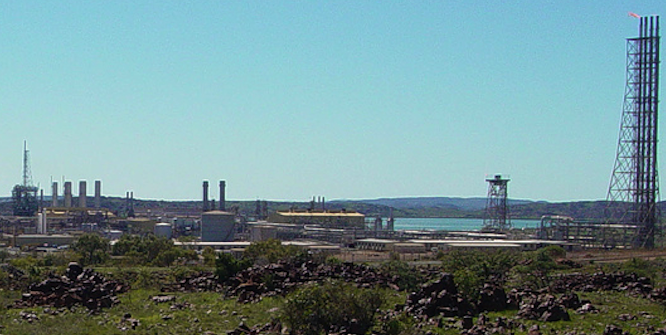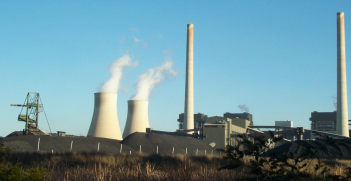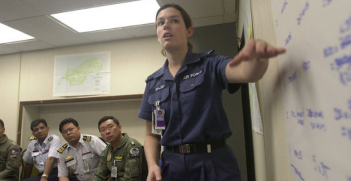The Importance of the North West Shelf Venture for the Australian Economy and Asian Markets

The Western Australian North West Shelf resource development project was initiated in the 1960s, yet is only now reaching its full potential. Despite slowing Asian markets, with exports rising dramatically Australia is set for a Liquid Nitrogen Gas boom.
The importance for the Australian economy
The Australian Northwest can be regarded as one of the most economically promising areas in the country. The vast expansion and production of iron ore in Western Australia currently accounts for one-fifth of the total value of national exports.
The Northwest holds 21 percent of the international share in iron ore, 15 percent in alumina, 12 percent in nickel, 9 percent in natural gas, 8 percent in diamonds, 7 percent in gold as well as 15 percent of minerals such as tantalum, 12 percent zircon, 10 percent limonite and 8 percent rutile. It is believed that the Pilbara region alone fomented a 0.2 growth of the national population. Resource sector projects that are carried out on an onshore and offshore capacity, such as Gorgon, Wheatstone and Pluto, continue to drive capital investment and an influx of people to the region. Since 2001 exports on the resources sector have increased from 55.6 billion USD to over 185 billion. Western Australia currently exports approximately 60 percent of these figures to Chinese markets.
The most ambitious project in the Australian Northwest is the North West Shelf venture (NWS). It includes a massive amount of hydrocarbon reserves within the Carnarvon Basin and most of its liquid gas reserves remain unused. Approximately 29.5 billion USD has been invested in the project since the 1980s. These reserves are significant, with Western Australia producing 80 percent of Australia’s exports during the 2013-2014 period alone and accounting for more than one third of Australia’s gas production. This major project is pivotal for Australia’s gas production in the Asia-Pacific.
The NWS project consists of a venture between six significant resource sector multinational companies: BHP Billiton, BP, Chevron, Japan Australia LNG, Shell and the Australian company, Woodside Energy. This venture is the world’s largest LNG supplier. Over the last 29 years, the NWS has become the major domestic producer of gas, and remains of vital importance to gas supply and production in Australia. The venture has positioned Australia as a major liquefied gas exporter to the Asia-Pacific, and in particular to China.
The importance for Asian-Pacific markets
At present Australia is the third largest LNG producer in the world behind Qatar and Malaysia. In addition, no other nation in the world has more plants under construction than Australia. By the time such projects come to fruition, the Northwest will be producing approximately 85.8 million tonnes per year. Then, Australia would replace both Qatar and Malaysia as the world’s number one LNG exporter. Australia therefore has the potential to become the leading gas producer and exporter in the Asia-Pacific, and particularly to Chinese markets. Due to a steady populational growth and the need for reliable, cleaner sources of energy, Australia should also become a significant political player across the region.
There are concerns, however, that the economic importance of the NWS venture in the Asia-Pacific could be compromised by a slowing Chinese economy. This being said, the introduction of the latest technology and infrastructure in the Northwest is still driving the expansion of national gas production.
In the short term, LNG production should become the most significant source of Australian revenue. Additionally, easy access deposits will trigger high production levels for several decades to come. It is believed that the gas boom is set to take place throughout 2015 and 2016, with LNG exports shooting up to 70 percent and then stabilising at 48 percent a year. The Carnarvon and Browse basin reserves will undoubtedly meet an increase in global demand for natural gas. According to these predictions, gas exports will be placed in the limelight of Australian’s economy.
Finally, the NWS Chevron project has recently sealed a commercial agreement with the South Korean industrial conglomerate SK Group. This binding agreement states that, from 2017, Chevron will supply South Korea with no less than 4.5 million tonnes of LNG for a five year period. A slowing Chinese economy has produced an impact on the resources industry and iron ore prices, but gas exports to both China and the Asia-Pacific region are still growing strongly. LNG exports will continue to be in high demand in the region. This will secure Australian economic relevance in the international gas industry for many years to come.
Flavia Bellieni Zimmermann holds a Bachelor of Laws with Honours from the Pontifical Catholic University in Rio de Janeiro and a Graduate Diploma of International Relations and National Security from Curtin University. She is also a Councillor for the Royal United Services Institute of Western Australia. This article is published under a Creative Commons Licence. It may be republished with permission.





